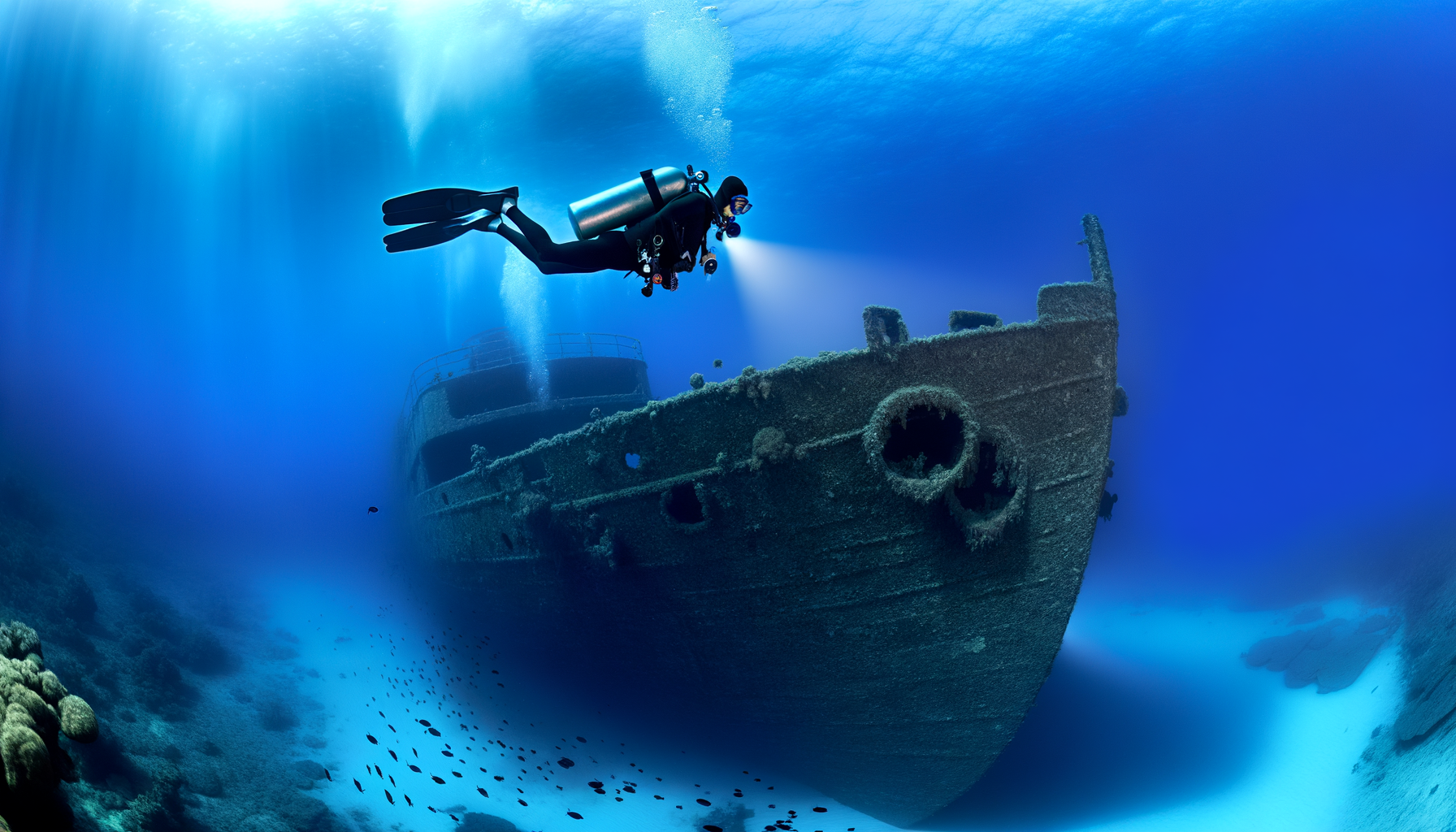
Exploring a submerged wreck is akin to a journey through history. These enigmatic remnants from bygone days rest on the seabeds of oceans, lakes, and rivers globally. Their fates were sealed by war, mishaps, or deliberate sinking, and for divers, approaching these wrecks is a thrilling escapade. Sunken wrecks encompass a broad range of vessels and aircraft, including vast aircraft carriers, submarines, opulent cruise liners, commercial vessels like tugboats, fishing boats, kelp harvesters, and private crafts such as yachts and sailboats. Even airplanes, collapsed structures, and the occasional vehicle can be found. They lie at diverse depths, within both crystalline warm waters and murky cold ones, with some maintaining their integrity and others merely fragments of their past splendor, yet all present an irresistible draw for divers craving adventure.
Why Engage in Wreck Diving
Divers are drawn to wrecks for myriad reasons. While some seek novel underwater landscapes beyond familiar reefs and corals, others approach wreck diving with a more earnest intent. For these individuals, the activity is fueled by scientific research, historical interest, or the prospect of discovering treasures, all heightened by the thrill of exploration. To glide over a navy ship’s superstructure, clutch the helm in the ship’s bridge, wander through a galley littered with utensils, or descend into the engine room where colossal machines once operated is to be transported to another time. It’s an amalgamation of mystery and history, an eerie yet magnificent encounter that sends shivers down the spine.
Rules for Wreck Diving
Many divers fantasize about unearthing treasures on wrecks, but the reality is that found valuables are often not theirs to keep. Objects with no apparent monetary worth are also protected by numerous laws. In California, for instance, wrecks over 50 years old are state property, making any retrieved items subject to confiscation. Similar laws exist elsewhere. Some divers believe these regulations preserve the site’s historical integrity for future explorers, while others contend that untouched artifacts will eventually perish and be lost to all. Given the current legal landscape, the wisest approach may be to “visit and admire, but only capture memories.” Commercial operators and dive masters are knowledgeable about wreck diving regulations and will inform divers of any pertinent restrictions. Divers from private vessels should research applicable laws before diving to avoid penalties and confiscation of gear.
Types of Wreck Diving
Wreck diving is categorized into non-penetration, limited-penetration, and full-penetration dives. Non-penetration dives involve swimming around the wreck without entering it, offering a safe introduction to the sport. Limited-penetration dives allow entry into illuminated parts of the wreck with visible exits, usually requiring additional equipment and training due to increased risks. Full-penetration dives involve navigating deep into the wreck’s interior, far from ambient light, and are considered technical diving that necessitates specialized equipment, training, and experience.
Hazards of Wreck Diving
Wreck diving poses unique risks such as entanglement, structural deterioration, and navigational challenges. Full-penetration dives amplify these dangers, with potential for disorientation, entrapment, or air supply issues. Minimizing these risks involves thorough preparation, proper equipment, and extensive training to ensure confidence and skill underwater.
Equipment for Wreck Diving
While standard dive gear suffices for non-penetration dives, more advanced dives necessitate specialized equipment. This includes redundant air systems for emergencies, various dive lights, cutting tools like knives or shears, wreck diving reels for navigation, and lift bags or marker buoys. Advanced wreck diving requires high-performance regulators, dual tank systems, sidemount setups, advanced dive computers, and backup devices.
Training for Wreck Diving
Wreck diving courses teach essential skills for safe exploration, with a focus on limited-penetration diving. Advanced courses delve into technical diving aspects. Certifying agencies such as IANTD, NAUI, PADI, SDI, SSI, and TDI offer specialty courses, each with specific training on safety, equipment use, and penetration techniques.
Wreck Diving Awaits
With countless wrecks dotting the seabeds worldwide, equipped and trained divers can unlock a realm of underwater adventures. Embarking on a wreck dive opens the door to a thrilling chapter in diving experiences.



